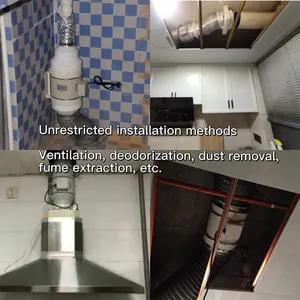Introduction to Air Flow Ducting
Air flow ducting is an essential component in modern HVAC (Heating, Ventilation, and Air Conditioning) systems that ensures efficient air distribution throughout residential, commercial, and industrial environments. The core function of air flow ducting is to facilitate a smooth and controlled passage of air, enhancing both indoor comfort and air quality. Understanding the different types, applications, and benefits of air flow ducting can help you make informed decisions about your HVAC system.
Types of Air Flow Ducting
There are several types of air flow ducting designed to meet various application needs. Here are the primary types:
- Flexible Ducting: Made from a combination of materials, flexible ducting can bend and adapt to differently shaped spaces, making it versatile for various installations.
- Rigid Ducting: Typically constructed from metal or fiberglass, rigid ducts offer durability and stable airflow, ideal for long-term installations.
- Spiral Ducting: A subset of rigid ducting, spiral ducting provides reduced air resistance and is often used in large buildings that require considerable air movement.
- Insulated Ducting: Designed to minimize energy loss, insulated ducting helps maintain air temperature, enhancing system efficiency in both heating and cooling applications.
Function and Features of Air Flow Ducting
Understanding the functions and features of air flow ducting can significantly impact the efficiency of your HVAC system:
- Air Distribution: Air flow ducting plays a critical role in distributing conditioned air evenly across spaces, ensuring consistent comfort levels.
- Energy Efficiency: Properly installed duct systems minimize air leakage, which enhances the system's overall energy performance, reducing operational costs.
- Durability: High-quality ducting materials resist rust and corrosion, ensuring a long lifespan and robust performance under various environmental conditions.
- Noise Reduction: Many duct systems employ sound attenuation features to minimize noise produced by air circulation, contributing to a more peaceful indoor environment.
Applications of Air Flow Ducting
Air flow ducting is utilized across numerous sectors, highlighting its versatility:
- Residential HVAC Systems: Ducting is often installed in homes to effectively manage heating and cooling needs throughout different rooms.
- Commercial Buildings: Offices and commercial spaces rely heavily on air flow ducting for climate control, ensuring occupants work in a comfortable environment.
- Industrial Applications: Factories and warehouses use ducting for ventilation and exhaust systems, promoting occupational safety and health.
- Greenhouses: Effective air flow is essential in agricultural settings. Air flow ducting helps maintain optimal temperature and humidity levels for plant growth.
Advantages of Using Air Flow Ducting
Choosing the right air flow ducting brings numerous advantages:
- Improved Air Quality: Ducting systems can be equipped with filters to trap dust, allergens, and other pollutants, promoting healthier indoor air.
- Cost Efficiency: Reduced energy consumption due to well-designed duct systems can translate into significant savings on utility bills.
- Enhanced Comfort: By distributing air evenly, ducting eliminates hot or cold spots, ensuring every part of a room or building is comfortable.
- Customization: Ducting systems can be tailored to meet specific needs, taking into consideration the architectural layout and usage of the space.

































